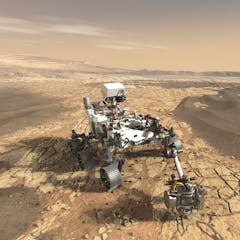
Articles on Antarctica
Displaying 101 - 120 of 331 articles

Carbon emissions are chilling the atmosphere 90km above Antarctica, at the edge of space

It would be the first concrete runway in Antarctica and have the biggest footprint of any project in the continent’s history.

Protecting the continent’s remaining pristine wilderness areas is urgent, but achievable.

As the world warmed from the last ice age, a rise in carbon dioxide levels stalled for nearly 2,000 years. That’s always puzzled scientists, but now they think they know what happened.

Latest research explores how a warming ocean circulates underneath Antarctica’s floating ice shelves and how this contributes to future sea level rise.

Over the past 30 years, the South Pole has been one of the fastest changing places on Earth, warming more than three times quicker than the rest of the world.

Our research on a remote Antarctic island found microplastics in the intestines of tiny animals.

Climate models have been overestimating how much sunlight hits the Southern Ocean. This is because the clouds there are different from clouds anywhere else. Bacterial DNA helped us understand why.

Martian meteorites allow scientists here on Earth to decode that planet’s geology, more than a decade before the first missions are scheduled to bring rocks back home from Mars.

There has been a rapid redirection of resources towards COVID-19-related research. In the long term, this resource reallocation is likely to result in budget cuts in all research areas.

We might need to ignore climate change right now if only to save our sanity, but it certainly hasn’t been ignoring us.

The heatwave highlights the connectedness of our climate systems: from the monsoon tropics to the southernmost continent.

A strong mind was key to surviving the monotony faced by Antarctic explorers enduring the isolation of long, remote winters.

Our research shows the Antarctic could be closer to a tipping point than previously thought.

Two centuries after it was first sighted by Russian explorers, Antarctica is a key site for studying the future of Earth’s climate – and for global scientific cooperation.

Living sustainably has its challenges, but none greater than in the climate and geography of Antarctica.

Emperor Penguins thrive in harsh conditions, but a new study shows that their fate depends on human action to slow global warming and associated loss of sea ice.

Antarctica is no longer the sleeping giant of sea level rise. New research delved into the past and found when the Earth warms, its ice sheets can melt extremely quickly.

New research confirms that what the world pumps into the atmosphere today has grave long-term consequences. Governments - especially Australia’s - must urgently ramp up efforts to reduce emissions.

Scientists are uncovering the secrets of a giant undersea rock shelf, parts of which lie four kilometres below the ocean’s surface.
